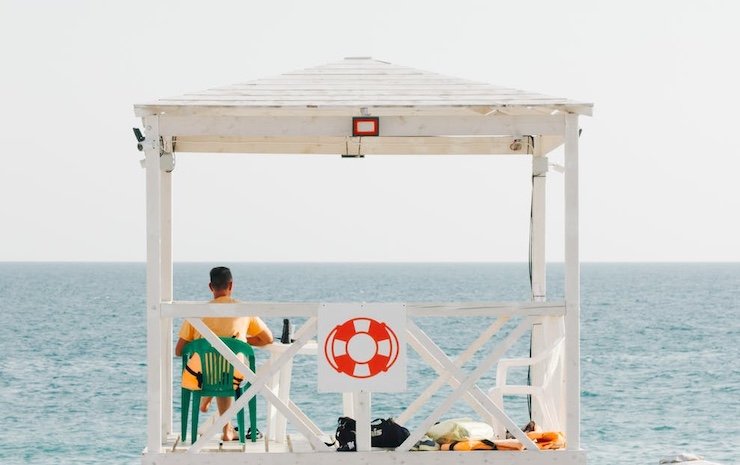Facing Lifeguard Shortages and Dangerous Rip Tides, More Beaches Turn to Drones for Drowning Prevention

Memorial Day is still months away, but it’s not too early to think about how to keep summer swimmers safe from drowning.
The number of those drownings is on the rise, officials in localities up and down the East Coast say. One reason? Persistent shortages of trained lifeguards, especially during the early and late summer months, when fewer college-age youth are available to work the beaches, leaving more swimmers and boaters completely unmonitored.
Many swimmers, intent on beating the extreme temperatures recorded in recent years, are plunging into the surf at unprotected beaches where dangerous riptides have become more frequent.
Carried out to sea, there’s no one back at shore ready and able to save them, beach officials say.
But even when trained lifeguards are available, drownings can still occur. Many swimmers insist on defying warnings not to swim when currents are known to be treacherous, and when they get into trouble, it may be too late to reach them in time.
It only takes a few minutes for an exhausted and struggling swimmer to start drowning, experts say. Getting them help quickly – a flotation device, above all – is essential.
And that’s where drones could make a huge difference.
A number of major tourist spots in Florida, Massachusetts and Rhode Island have already begun investing in UAVs.
The town of Charlestown, RI currently has a single drone available to aid swimmers at nearby beaches, officials there say.
Charlestown GIS Coordinator Stephen McCandless says the town’s lifeguards are using drones to survey the water, looking for signs of trouble, including sharks as well as dangerous floating debris.
“We don’t expect the lifeguards to do anything different,” he notes. “[But] there are times when this system can definitely get to a person a lot quicker than a lifeguard can.”
The drone hovers over a swimmer and releases a pouch that inflates upon hitting the water. “It’s a game changer,” McCandless says.
Drones are also being deployed at some of the nation’s most popular lakes, including Lake Michigan near Chicago, where drownings have increased dramatically in recent years.
In this case, the drone deployed is an unmanned surface vessel, about 6 feet long and weighing 40 pounds, that can speed from the shore to a swimmer in peril carrying a life vest, a helmet and a two-way radio, which allows first responders to speak to the individual struggling in the water.
The drone, dubbed “Emily,” is available to lakes and beaches across the United States, according to Jeffrey Loman, manager of the Great Lakes Unmanned Systems, which developed the device. It’s typically stored in a metal box and can be accessed by anyone at a beach to utilize in helping save a victim in distress.
Many Michigan lakes haven’t employed lifeguards for years, “Emily,” and the quick thinking of other beach-goers, may be a drowning swimmer’s only hope for rescue these days, Loman says.
Other beaches, like Panama City’s in Florida, scene of the nation’s largest number of drownings, haven’t yet seen a need for drones. In fact. local officials there have been pushing for recreational drones to be banned from the beaches, ostensibly to prevent invasions of privacy. Officials are hoping to have more lifeguards available to monitor the beaches this summer.
Rhode Island’s state’s environmental agency says it doesn’t have a budget to purchase enough drones to serve the 12 beaches the agency is responsible for. It does have one drone available, but hasn’t yet decided where to deploy it, officials say..
It turns out that town officials in Charlestown didn’t wait for the state to act – they acquired their drone on their own initiative, using volunteer funds.
Cost is one factor cited by beach officials as a deterrent to purchasing a drone for lifeguard support. Aerial surveillance drones are relatively inexpensive, but most are too small and lightweight to carry even a life vest, much less to tow a drowning swimmer ashore.
Chris Dembinsky, the technology manager for Florida’s Volusia County beach safety division, says his budget allows him to purchase drones ranging from $3,000-$5,000 each. He currently has four in his arsenal to patrol bodies of water in his area, which includes Daytona Beach, where a record 500 swimmers required rescue from rip currents last June.
Larger and sturdier drones needed for full-blown rescue operations would cost 5-6 times as much, Dembrinski says.
But his surveillance drones can still identify a lost kayaker or drowning swimmer and alert public safety officials to their precise location, triggering a swift rescue.
|